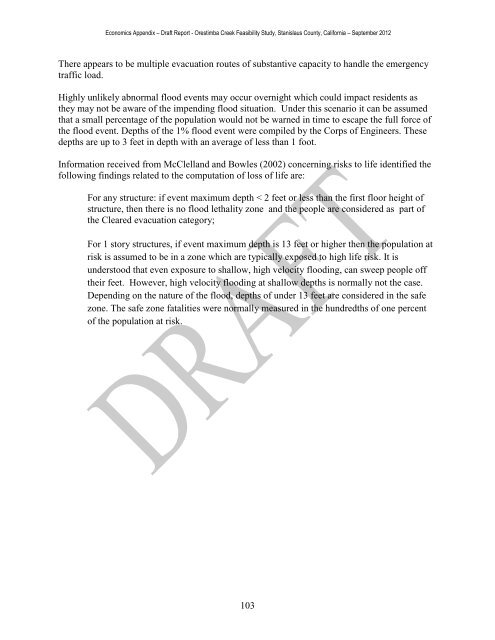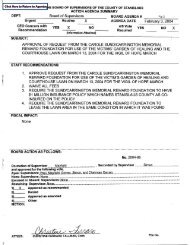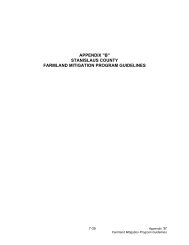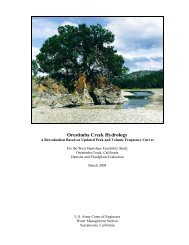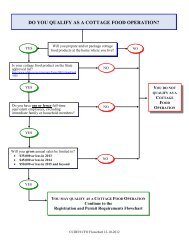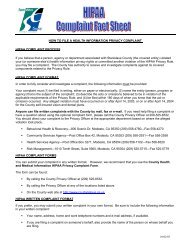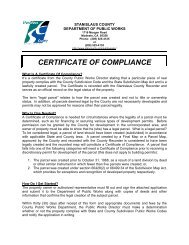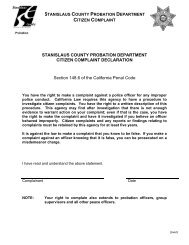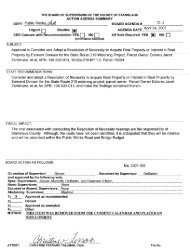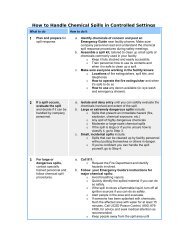Orestimba Creek Feasibility Study - Stanislaus County
Orestimba Creek Feasibility Study - Stanislaus County
Orestimba Creek Feasibility Study - Stanislaus County
Create successful ePaper yourself
Turn your PDF publications into a flip-book with our unique Google optimized e-Paper software.
Economics Appendix – Draft Report - <strong>Orestimba</strong> <strong>Creek</strong> <strong>Feasibility</strong> <strong>Study</strong>, <strong>Stanislaus</strong> <strong>County</strong>, California – September 2012<br />
There appears to be multiple evacuation routes of substantive capacity to handle the emergency<br />
traffic load.<br />
Highly unlikely abnormal flood events may occur overnight which could impact residents as<br />
they may not be aware of the impending flood situation. Under this scenario it can be assumed<br />
that a small percentage of the population would not be warned in time to escape the full force of<br />
the flood event. Depths of the 1% flood event were compiled by the Corps of Engineers. These<br />
depths are up to 3 feet in depth with an average of less than 1 foot.<br />
Information received from McClelland and Bowles (2002) concerning risks to life identified the<br />
following findings related to the computation of loss of life are:<br />
For any structure: if event maximum depth < 2 feet or less than the first floor height of<br />
structure, then there is no flood lethality zone and the people are considered as part of<br />
the Cleared evacuation category;<br />
For 1 story structures, if event maximum depth is 13 feet or higher then the population at<br />
risk is assumed to be in a zone which are typically exposed to high life risk. It is<br />
understood that even exposure to shallow, high velocity flooding, can sweep people off<br />
their feet. However, high velocity flooding at shallow depths is normally not the case.<br />
Depending on the nature of the flood, depths of under 13 feet are considered in the safe<br />
zone. The safe zone fatalities were normally measured in the hundredths of one percent<br />
of the population at risk.<br />
103


